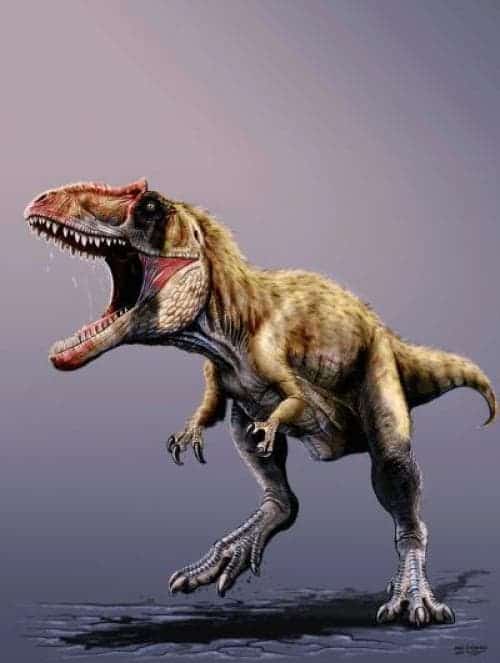When herbivorous dinosaurs went to sleep, they had bad dreams about Tyrannosaurs. But what where Tyrannosaurs afraid of? If you’re thinking “Nothing”, then you’re really wrong. A new species of carnivorous dinosaur (one of the three largest ever discovered in North America) competed with them 98 million years ago – the newly discovered species, Siats meekerorum; as a matter of fact, the species was the apex predator for millions of years, bullying pretty much all other species – Tyrannosaurs included.
Named after a cannibalistic man-eating monster from the Ute Indian tribe, Siats was a member of the Carcharodontosauridae – a group of dinosaurs which includes some of the largest predators ever discovered. They lived in the Cretaceous, from about 127 million years to 89 million years ago. After that, they started being overcome by smaller, more niched predators. The discovery of Siats comes after a long period of wait.
“It’s been 63 years since a predator of this size has been named from North America,” says Lindsay Zanno, a North Carolina State University paleontologist with a joint appointment at the North Carolina Museum of Natural Sciences, and lead author of a Nature Communications paper describing the find. “You can’t imagine how thrilled we were to see the bones of this behemoth poking out of the hillside.”
The described individual measured more than 15 meters in length and weighed at least four tons – but despite its giant size, it was still a juvenile! Zanno and colleague Peter Makovicky, from Chicago’s Field Museum of Natural History believe that a full grown specimen would have easily measured over 10 meters.
Siats terrorized what is now Utah during the Late Cretaceous period, showing that the reign of the Carcharodontosaurids lasted much longer than previously believed. This fossil fills in a huge 30 million year gap in the fossil record; only after they started to decline did the Tyrannosaurs finally start to claim the top spot.
“The huge size difference certainly suggests that tyrannosaurs were held in check by carcharodontosaurs, and only evolved into enormous apex predators after the carcharodontosaurs disappeared,” says Makovicky. Zanno adds, “Contemporary tyrannosaurs would have been no more than a nuisance to Siats, like jackals at a lion kill. It wasn’t until carcharodontosaurs bowed out that the stage could be set for the evolution of T. rex.”
The team is confident that they will soon find other fossils which will help them understand the Cretaceous environment.
“We have made more exciting discoveries including two new species of dinosaur,” Makovicky says.
“Stay tuned,” adds Zanno. “There are a lot more cool critters where Siats came from.”
Journal Reference:
- Lindsay E. Zanno, Peter J. Makovicky. Neovenatorid theropods are apex predators in the Late Cretaceous of North America. Nature Communications, 2013; 4 DOI:10.1038/ncomms3827










